|
Werrington starts to make sense: Armshead, Salters,
Washerwall
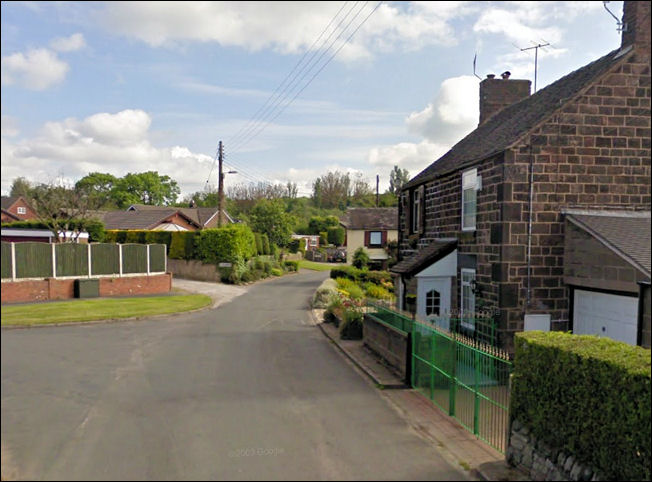
Bucknall’s Brookhouse
Lane
Google Street View
Imagine the smouldering Colin Firth and the beautiful Jennifer Ehrle in the television version of Pride and Prejudice. Recall the scene where Fitzwilliam Darcy arrives from the moor on his sweat-flecked stallion watched by the bosom-heaving Elizabeth Bennet. Love and danger is in the air; the mood is heavy with menace and romance. I tell you it must have been like this when Hanley’s Iris Victoria Rossi first met Nathan Dale in Werrington.
“I was riding along Brookhouse Lane bareback astride the big brown horse,” recalls 87 year old farmer Nathan. “It was evening and I was coming from the top farm where my father worked on the edge of Wetley Moor bringing the horse down to Bottom Brookhouse Farm.
That’s when I first saw Iris Victoria. She was beautiful; I never knew a woman so lively, and I knew instantly I wanted to marry her. We’ve been together ever since.”
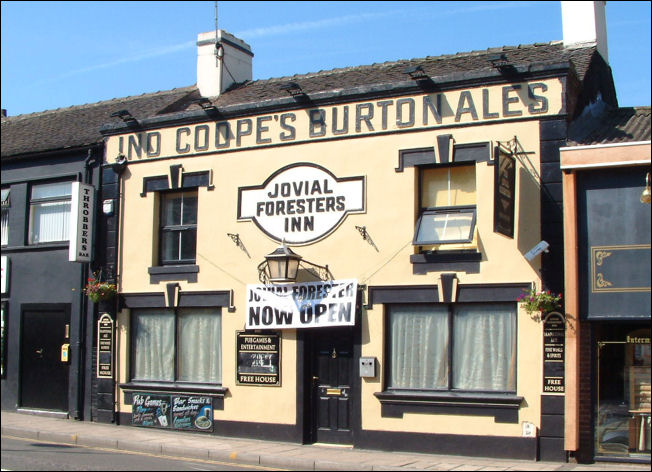
Jovial Foresters pub in Marsh Street,
Hanley once a Rossi business
That was fifty years ago when the prominent Potteries/Italian Rossi family moved to a house in Bucknall’s Brookhouse Lane.
“My father was a local businessman whose family came from Italy,” explains Iris. “He was known really as an ice cream maker but Rossi’s had a number of shops in the lower part of Hanley where we lived next door to the Co-op at 128 Hope Street. It’s gone now of course but the recently reopened Jovial Foresters pub in Marsh Street was also a Rossi business.
My parents came out to Werrington to retire,” she adds. “And almost as soon as we moved here I met Nathan. He was a good catch, really handsome, with a farm which we built up together raising our two children in the countryside.”
Family photographs are strategically placed around the tiny farm cottage – smiling children at various stages of development; a picture of a handsome Nathan and a dazzling Iris in her bridal gown posing beside a shiny black limousine.
“I was a Hanley Babe,” declares Iris suddenly producing a photograph of a line of leggy chorus girls on the stage of Hanley’s Theatre Royal. “I was a lovely looking girl,” she remarks with refreshing immodesty. “Guess which one was me?”
The dark Italian countenance really was the giveaway but I confess I couldn’t pick out Iris from this lovely line of long-forgotten Potteries’ beauties.
“I farm thirty acres now with thirty beef cattle with the rest arable,” says Nathan rerouting the conversation to more prosaic themes. “My son Martin does most of the work these days.”
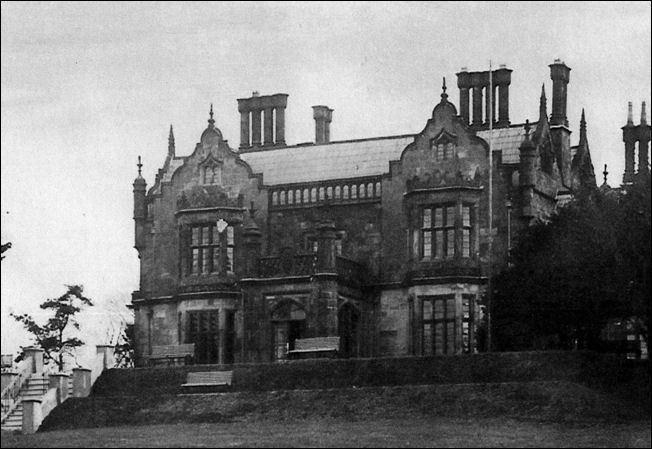
Pottery manufacturer Job Meigh
II bought the Ash Estate
in 1837 where he built this magnificent mansion.
Brookhouse Lane Farm sits tidily below Wetley Moor Werrington. It was originally part of Ash Hall Estate of the Meigh family. Pottery manufacturer Job Meigh II, son of Job Meigh I (1750-1817), who manufactured pottery on the site of Hanley Old Hall, bought the Ash Estate in 1837 where he built his magnificent mansion.
“The cottage we live in,” says Nathan, “was one of the lodges to the big house on Ash Bank. Some say it was the gamekeeper cottage and there was a coach house here with stables.”
Accompanying me on my visit to Brookhouse Lane Farm is local councillor Bill Day whose constituency covers Werrington and Wetley Moor. Bill is the chairman of Wetley Moor Management Committee, a caretaking group made up of members of Staffordshire Moorlands and Stoke on Trent councils. Although they are the best of friends Nathan and Bill don’t always see eye-to-eye over the use of the moor and the heath land.
“I know every inch of the moor but the problem’s always been encroachment,” Nathan complains. “My family are commoners and have had the rights to graze that land over three generations but this management want that to end.”
Bill can see Nathan’s point.
“And you’ll continue to have those rights,” he says to Nathan, “but we have to manage it properly; if we don’t it will be destroyed by further encroachment by nature and by people who want it for private development.”
Wetley Moor is a Site of Special Scientific Interest (SSSI). Bill has arranged to meet Staffordshire Moorlands Countryside officer Mark Preece and historian Elizabeth Bass. But before we arrive at the moor Bill takes me to see Ash Hall, not the former Ash Bank Hotel and Brewer’s Fayre, but the dual residential nursing home owned these days by the Bowker family. Unseen from the main road the house was described in 1843 by contemporary historian John Ward as:
‘…. a mansion called on an elevated site, overlooking Bucknall and Hanley, with which, for the beauty of the architecture, and its perfect adaptation to every purpose of domestic comfort, very few modern houses will bear comparison….’
Indeed Ash Hall is a fabulous period manor house with grey stone architecture, pointed gables and gothic arches. But the views across Stoke on Trent are stunning; the whole vision is like looking at a corporeal atlas of the entire district demonstrating the power of wealth that enabled those rich industrialists to acquire such outstanding locations at a whim!

Welcome to Wetley Moor
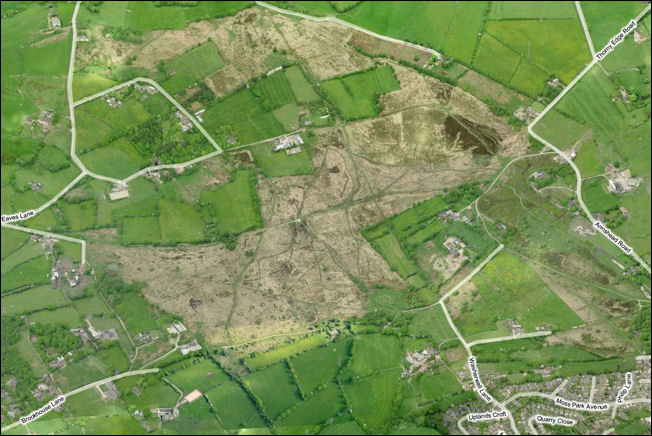
Wetley Moor - a Site of Special Scientific Interest
Bing Maps
Bill and I catch up with Elizabeth and Mark at the Armshead car park that services the 70 hectares of this protected heathland.
“This is where the lords of the manor gave out annual alms,” says Elizabeth, a WEA teacher and author of a number of local history books about Werrington. “Early references to the moor date back to the abbey at Hulton. Originally salt carriers would travel across the moor from Cheshire to Caverswall through Werrington by Washerwall and Salters Lanes,” she continues.
“My own grandparents came from Ubberley Hall Farm in Bucknall regularly to cut peat from the moor. Of course the whole was riddled with bell pits where coal was dug and taken to the Potteries to sell as kiln fuel. And during the General Strike of 1926 the whole of the moor was covered with folk desperate for domestic coal.”
Even on a warm sunny day Wetley Moor has a dramatic appearance.
“I’ve often found myself deep in the middle of the moor and had no conception where I was and which way to go to get back to civilization,” says Bill. Elizabeth and Mark nod knowingly. Mark’s job is to protect the moor from encroachment not just from people but from nature itself.
“Cattle-grazing has been a problem in the past,” says Mark, “but gradually I can see a time when we will be able to reintroduce it if only to keep some of the other problems at bay. The moor is a classified lowland heath which in fact represents ten percent of Staffordshire’s total.
It is indeed one of the highest valued nature conservations in England. Originally the moor was classed as waste under the Abbey who used it for grazing livestock. There was at least a thousand acres of it in earlier times.”
So what makes it special today?
“Well,” replies Mark, “about seventy-percent of Britain’s lowland heath has been lost in the past 200 years and has become a threatened habitat for natural wildlife and plant life. The ongoing danger is the natural change to the environment by trees shading out the heather. Purple heather is the substance that creates the heathland so the aim of management is to stop any change and promote a good balance of purple heather and grass. We do this by cutting ground vegetation and removing invasive trees. If left alone the moor would become woodland and the heath would be destroyed. That’s how nature works.”
Following the old salt lanes leads us through Werrington village itself where Elizabeth points out the old weaver’s cottages in Washerwall Lane.
“This was known as Bleach House for many years,” she says allocating words in a fascinating illustration of how the weavers went about their business. “Across the lane and in the area at the side of the well women weavers would stretch out their washed and bleached fabrics onto poles called tenterhooks leaving them to dry.”

Washerwall Lane - on the
far right is the old well
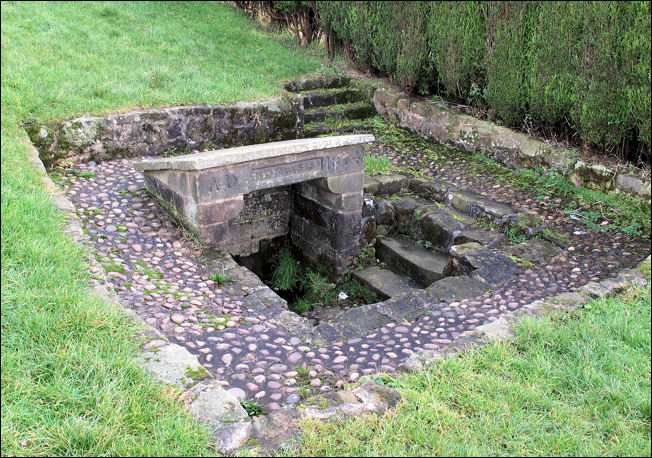
Washerwall Spring
And nearby is the village well.
“This well had been long forgotten about,” says Bill. “It was in use in 1874 but about five years ago my wife May and I uncovered it and cleaned it up. Now we’ve started to have a village well-dressing each year. And very popular it is too.”
All of a sudden the place names of Werrington start to make sense: Armshead, Salters, Washerwall; the weaver’s cottages where over the door of one is a faded wooden plaque on which you can just about make out an old inscription – ‘S. Dale, Licensed to sell tobacco’.
The Dale’s certainly made and left their mark in Werrington. It seems Nathan Dale’s father, Arthur Dale, was the last commoner to have grazing rights all across Wetley Moor.
“By rights the generation clause will apply to Nathan and his son Martin,” says Bill. “But for the moment it’s not used. But who knows what the future brings. Meanwhile it’s our intention to do what’s best all round for the heathland of Werrington.”
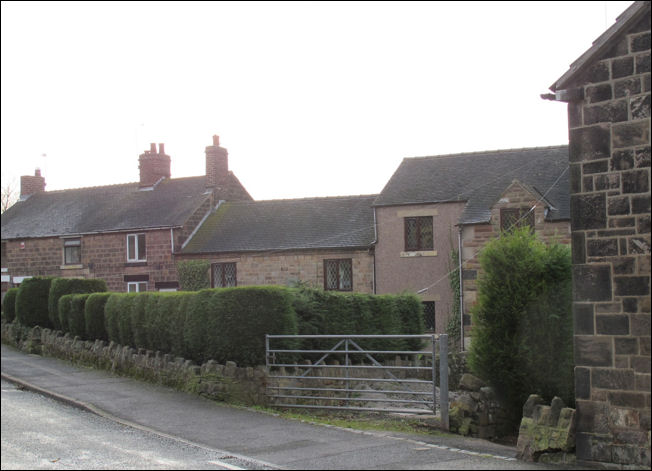
old weaver’s cottages in Washerwall
Lane

S. Dale, Licensed to sell tobacco
Fred Hughes - 2006

|
![]()
![]()
![]()